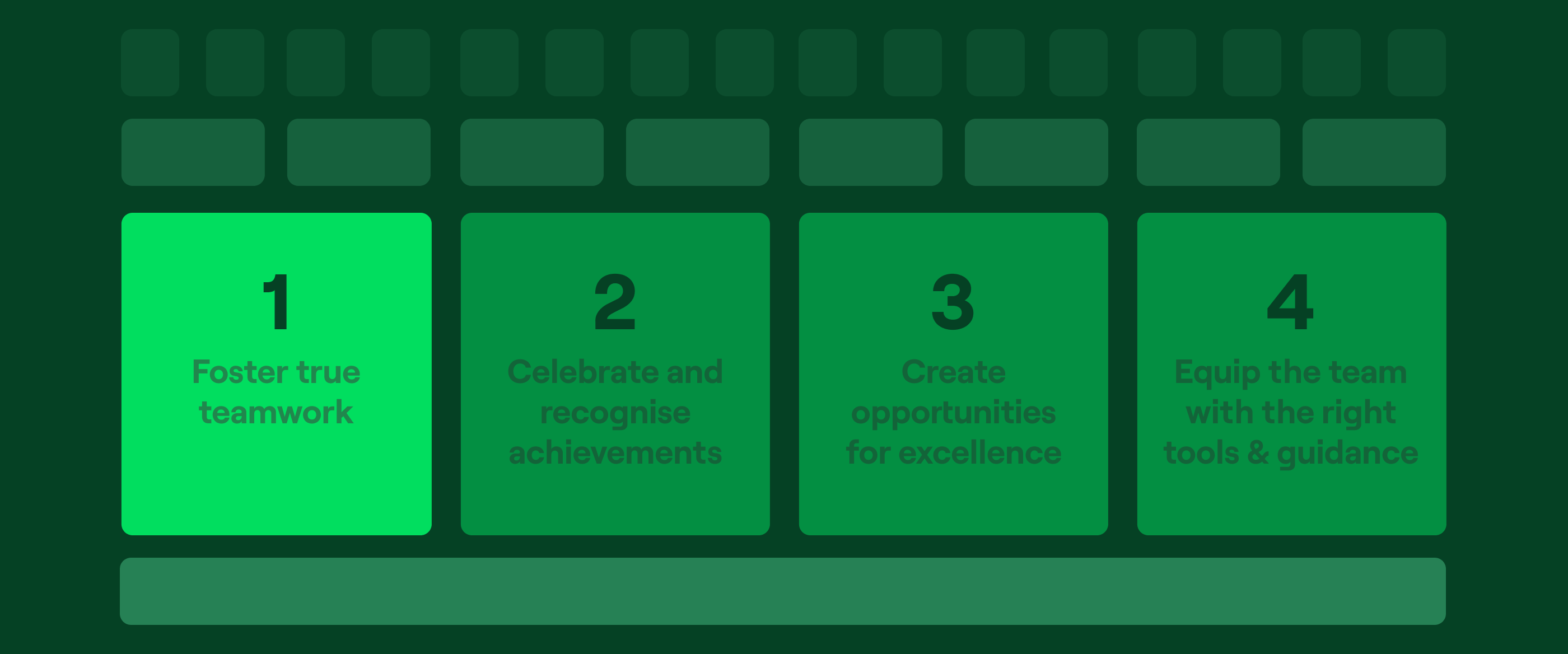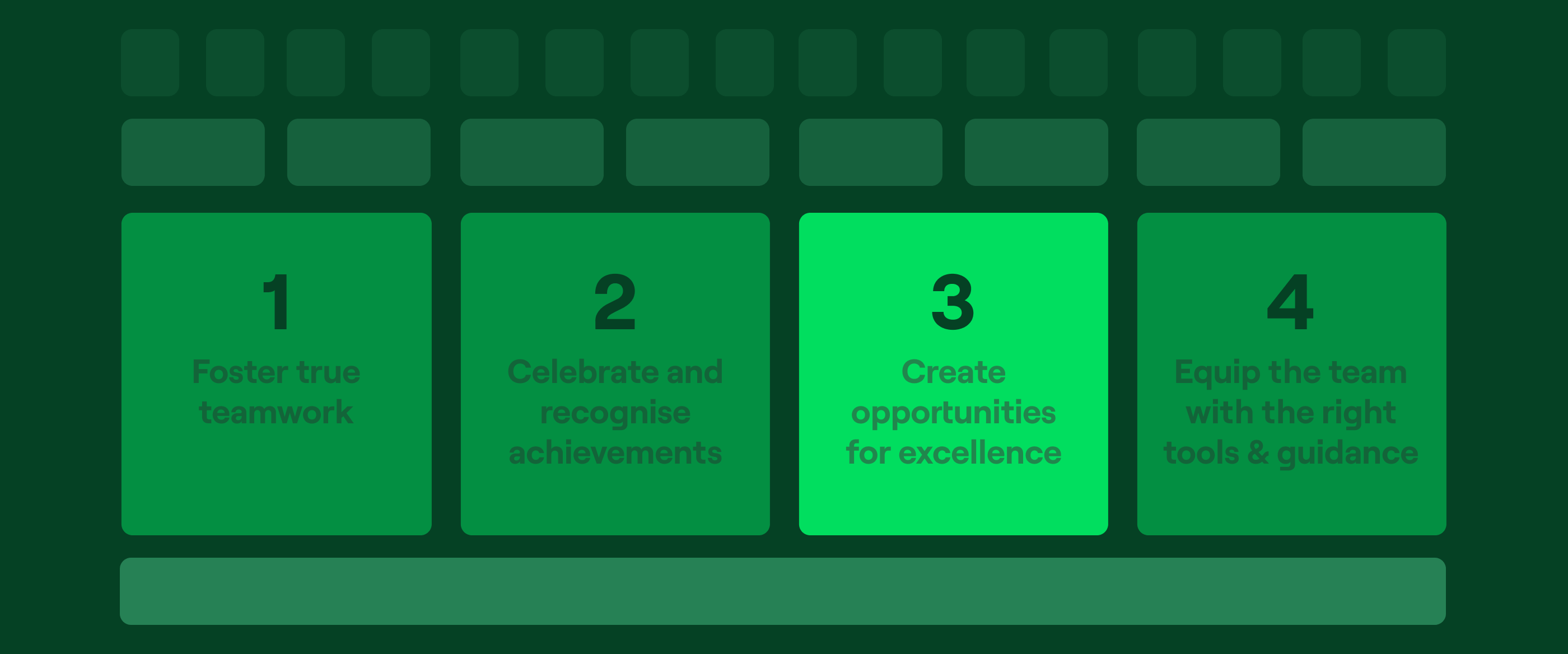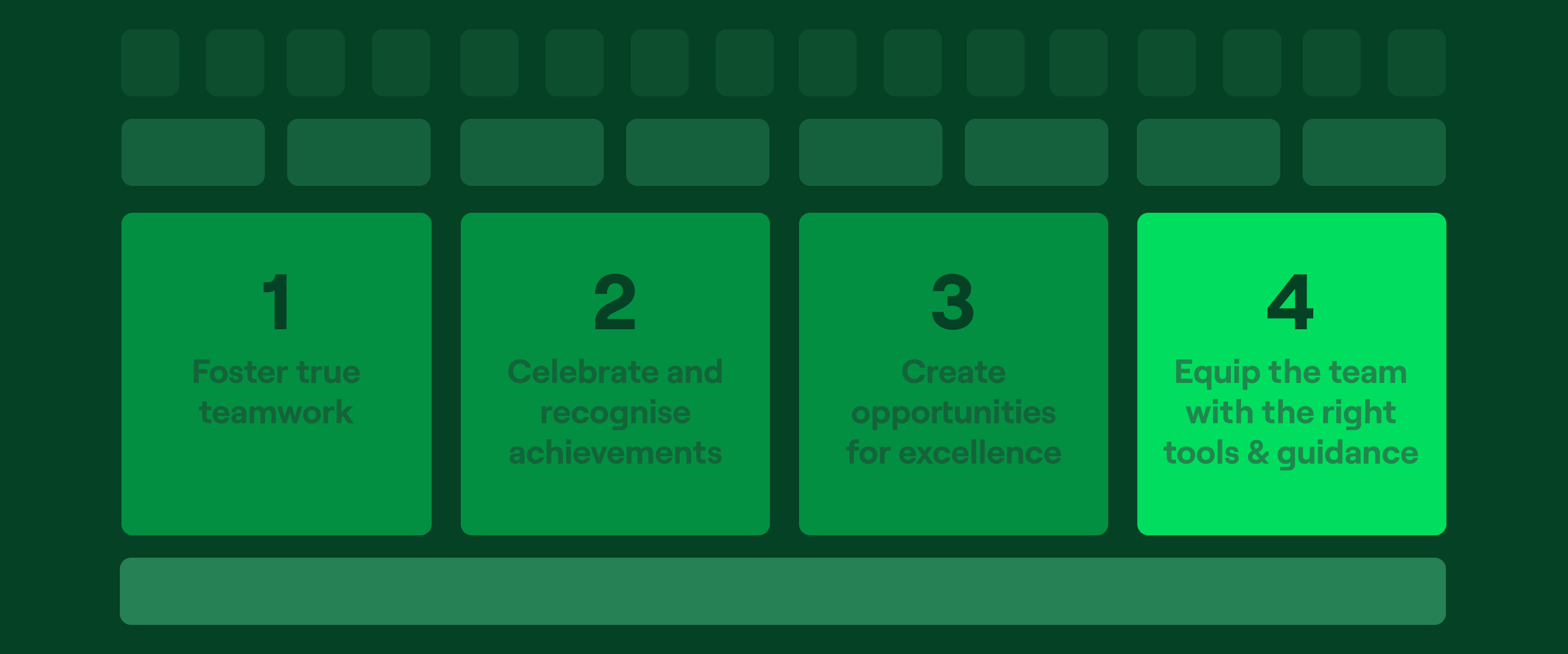Scaling culture in a scale-up
Like it or not, most of us spend a substantial portion of our day at work. We’re surrounded by people, processes, tools and all the chaos that comes with each of these.
Workplace culture is not what a company claims to value, it’s how people actually behave and experience work every day. It influences morale, productivity, retention and the overall success of the organisation.
“...almost three quarters (73%) of professionals have left a job because they disliked the company culture. The study also found that while 82% of professionals have worked for a company where they disliked the company culture, 90% of employers recognised the importance of finding candidates who are a good cultural fit for their organisation.”
This couldn’t be more true in a consultancy like Hyperact where fundamentally, your people ARE your product.. But this applies equally to any company no matter the size or business model. It’s fair to say the earlier in a business’s life a structure is implemented, the easier it is to make it stick. But it’s never too late to make even small changes that make a massive difference to the people and teams that operate in it day to day.
When I started at Hyperact in 2023, one of the exciting opportunities I identified was the opportunity to take ownership to build out these principles from day one. After all I was their first permanent hire.
I collated all the best practices I’d seen over the previous 20 years and built a V1 culture framework for us to roll out internally. As an added bonus it also gives every consultant at Hyperact guidance to help support and influence cultures within the clients we work with.
Hyperact’s Culture Framework V1
🏛 Pillar 1: Foster true teamwork

Bringing people together and making them feel part of the journey is key to giving them something meaningful to get up for in the morning. Most people don’t want to be just another cog in the machine. They want to contribute, to shape outcomes, and to feel connected to something bigger than their individual output.
Technology attracts a wonderfully diverse range of personalities, and that’s part of what makes the sector so great to work in. It’s also true that many people in our industry are naturally introverted and have thrived in remote and hybrid setups. But regardless of someone’s working style, creating opportunities to collaborate and socialise in person consistently pays dividends. When people come together face-to-face workshopping, solving problems, sharing ideas, and building relationships, their sense of ownership, trust and momentum grows.
Segments
1A. Define onboarding process
- Introduce branded welcome packs and measure engagement
- Create a simple and consistent equipment distribution plan
- Meet key colleagues in week one
- Create and maintain a who’s who directory
- Get feedback from new starters after 3 months to continually improve onboarding
1B. Equip teams to work together
- Agree official time away from daily duties to collaborate
- Enable access to an office space to allow preferred working practices
1C. Team socials
- Plan summer and Christmas parties 3 months in advance
- Encourage self-initiated localised socialising (that doesn’t always rely on alcohol)
🏛 Pillar 2: Celebrate and recognise achievements

Of all four pillars, this one arguably delivers the highest return on investment. It’s about getting the small things right, taking the time and allocating the (often small) budgets needed to lift your teams up through meaningful recognition and reward.
When celebration becomes part of the culture, people feel seen. They feel valued. They understand that their effort has impact. I’ve watched the positive momentum that builds when achievements are acknowledged consistently, and I’ve seen the slow erosion that happens when they’re not. Motivation fades quietly when great work goes unnoticed.
Recognition doesn’t need to be grand or expensive. It simply needs to be intentional and authentic. When people know their contributions matter, they give more of their best to the work, to the product, and to the people around them.
Segments
2A. Empower employees to shout out exemplary behaviours
- Create a dedicated ‘kudos’ channel including some guidelines and examples
- Provide the opportunity to gather and leave 360 feedback
2B. Showcase progress to celebrate success
- Define your case study process (If you’re an agency)
- Define your internal showcase process (If you’re a product company)
🏛 Pillar 3: Create opportunities for excellence

A strong team culture has a flywheel effect. When people feel trusted, supported, and equipped to do great work, their appetite to go above and beyond increases naturally. This is the power of getting the basics right and delivering them consistently. In the right environment, people don’t just strive for excellence for themselves, they strive for it for the business, because one feeds the other.
Every role has a “honeymoon period” where early excitement masks frustrations and challenges. Once that period fades, motivation relies less on novelty and more on aspiration. That’s why it’s vital to give people clear visibility of where they can grow, and to back that up with meaningful opportunities to stretch, experiment, and progress.
When individuals can see a path to becoming excellent, and are given the opportunities to get there, they rise to the challenge. That’s how you turn a good team into a great one.
Segments
3A. Development setting and review cycles
- Define and share salary review policy
- Define and share bonus policy (if applicable)
- Define and share career level framework
3B. People support structure
- Define people support frequency and formats (1-to-1s, catch-ups etc.)
3C. Opportunities to represent your business externally
- Define dos and don'ts for social posting
- Discuss and encourage event attendance and budgets
- Discuss and encourage local community involvement (both within and outside specialisms)
🏛 Pillar 4: Equip the team with the right tools and guidance / information.

This pillar is often overlooked because its value is harder to measure… until it’s missing. But its importance can’t be overstated. When people don’t have the right tools, information, support or clarity to do their jobs well, frustration builds quietly. That’s where the whispers in dark corners begin. That’s where motivation drains away. And that’s where resilience eventually snaps.
I’ve seen it first-hand. I’ve left businesses because of it, and I’ve watched excellent people walk out the door for the same reason. Not because they didn’t care, but because they cared too much to keep fighting uphill with broken processes, unclear expectations, or inadequate support.
Equipping people properly isn’t a luxury. It’s the foundation of sustainable performance and wellbeing. When teams have what they need and the right level of guidance, they can focus their energy where it counts: doing great work.
Segments
4A. Consider UX when choosing internal tooling
- Procure administrative systems that are intuitive and friction free
4B. Personal budgets and expenses
- Document and socialise learning and personal development budget policies
- Encourage using this annual budget rather than hiding it
- Create a clear route to claiming back expenses
4C. Clear communication channels from leadership on business strategy and performance
- Socialise the business mission, vision and strategies and get your team's daily activities nested into these
- Discuss OKRs and performance with teams once a quarter
- Give people the opportunity to feed into ideas and develop OKRs
Closing thoughts
A great working culture isn’t created by perks, slogans, or vague notions of “team spirit”. It’s built through the consistent, deliberate application of the fundamentals. Fostering true teamwork, celebrating and recognising achievements, creating opportunities for excellence, and equipping people with the tools and guidance they need to thrive.
When these four pillars work together, they form a self-reinforcing system. One that fuels motivation, strengthens connection, and empowers people to do the best work of their careers. Get the basics right, repeatedly and intentionally, and culture stops being something you talk about. It becomes something people feel every day.
At Hyperact, we’ve introduced this MVP framework to support our current stage of scale-up, and it’s already proving its value. We’re sharing it in the hope it gives other growing teams something useful to take away.

